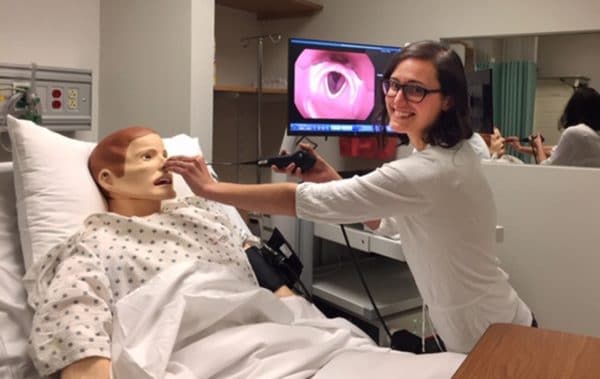
For many Northern Arizona University researchers, the one thing that prevents them from completing groundbreaking research is the cost of equipment or programs needed to capture their data.
For the past five years, NAU’s Southwest Health Equity Research Collaborative’s Research Infrastructure Core (RIC) has purchased much-needed equipment totaling approximately $1.9 million for almost 20 researchers in a variety of different NAU departments.
According to RIC co-leads Regents’ Professor Robert Trotter, Department of Anthropology and Catherine Propper, professor in the Department of Biological Sciences, the goal of purchasing equipment is to support NAU researchers to develop cutting-edge interdisciplinary research in health equity fields.
“This equipment supports new investigators and others to build their research programs up to the next level,” said Propper. “Having these emerging technologies available has been essential to our continued build-out of health equity-related research at NAU as well as to training the next generation of our workforce.”
Previous RIC equipment purchases have included water purification systems, freezers, a cell IQ incubator, a state-of-the-art real time PCR machine, a DNA/RNA fragment analyzer, a flow cytometer xCELLigence and even a Time-of-Flight mass spectrometer.
Rebecca Bartlett, assistant professor in NAU’s Department of Communication Sciences and Disorders, offers a graduate-level course about swallowing disorders. Her students practice flexible nasendoscopy on human patient simulators using the RIC equipment.
In a recent research project with Savannah Bruecker, former graduate student in the School of Nursing, and Bobby Eccleston, assistant clinical professors in the School of Nursing, Bartlett and colleagues found that training students in how to perform a clinical swallow evaluation using a human patient simulator yielded better long-term knowledge than traditional teaching methods, such as reading a textbook and listening to a lecture.
“This gives the students a low-stakes opportunity to practice endoscopy, and a context for me to test their knowledge of anatomy,” Bartlett said of the equipment.
Bartlett said that for her next project, she would like to use the RIC-funded equipment to measure learning outcomes for endoscopy training in two training paradigms, such as the human patient simulator versus traditional training methods.
Laura Wasylenki, associate professor in the School of Earth and Sustainability, uses an Agilent inductively coupled plasma mass spectrometer, purchased through RIC, to measure concentrations of trace metals in a variety of environmental, geological, and biological samples.
“Within my own research group, we have used the instrument to measure uranium concentrations in plant tissues. We have also measured tungsten concentrations in a lot of lab experiments,” she said.
Wasylenki said that tungsten is increasingly regarded as causing bone cancers, although the mechanism of carcinogenesis is still not confirmed. Despite known contamination at mines, smelting facilities, machining facilities, and weapons testing fields, she said that almost nothing is known yet about what controls tungsten’s behavior in the environment.
“We’re studying the chemical reactions that happen automatically in nature that are most likely to retard migration of dissolved tungsten to try to figure out how they work at the molecular scale,” she said. “Maybe we can predict how much tungsten will travel how far and how fast in contaminated soils, and maybe we can design an effective remediation strategy.”
Regents’ Professor Jani Ingram, in NAU’s Department of Chemistry and Biochemistry, and her colleagues have also used the instrument to measure heavy metal contents in rodent hair collected in agricultural fields near Yuma that may have elevated levels of toxic metals.
Wasylenki said she has also analyzed gadolinium in her own blood, urine, and hair, collected last spring using the Agilent.
“Gadolinium is used as a contrast agent during MRI procedures, because that makes it easier to identify masses and lesions,” Wasylenki said. “After being injected with a pretty large amount of gadolinium, each patient urinates it all out, so this rare element is much more common than it should be in the wastewater treatment plant and in reclaimed water. Maybe we’ll figure out how to use it as a tracer for all the places that reclaimed water ends up.”
RIC also provides support for equipment service contracts and maintenance to ensure that the investigators’ effort are sustained. The equipment must be used for research associated with health equity related projects that include clinical, behavioral, sociocultural, and basic science work. RIC prioritizes equipment that will have multiple users.
To learn more, visit the RIC website or use the RIC Equipment Support Request Form to apply for funding. SHERC, U54MD012388, is sponsored by the National Institute on Minority Health and Health Disparities (NIMHD).